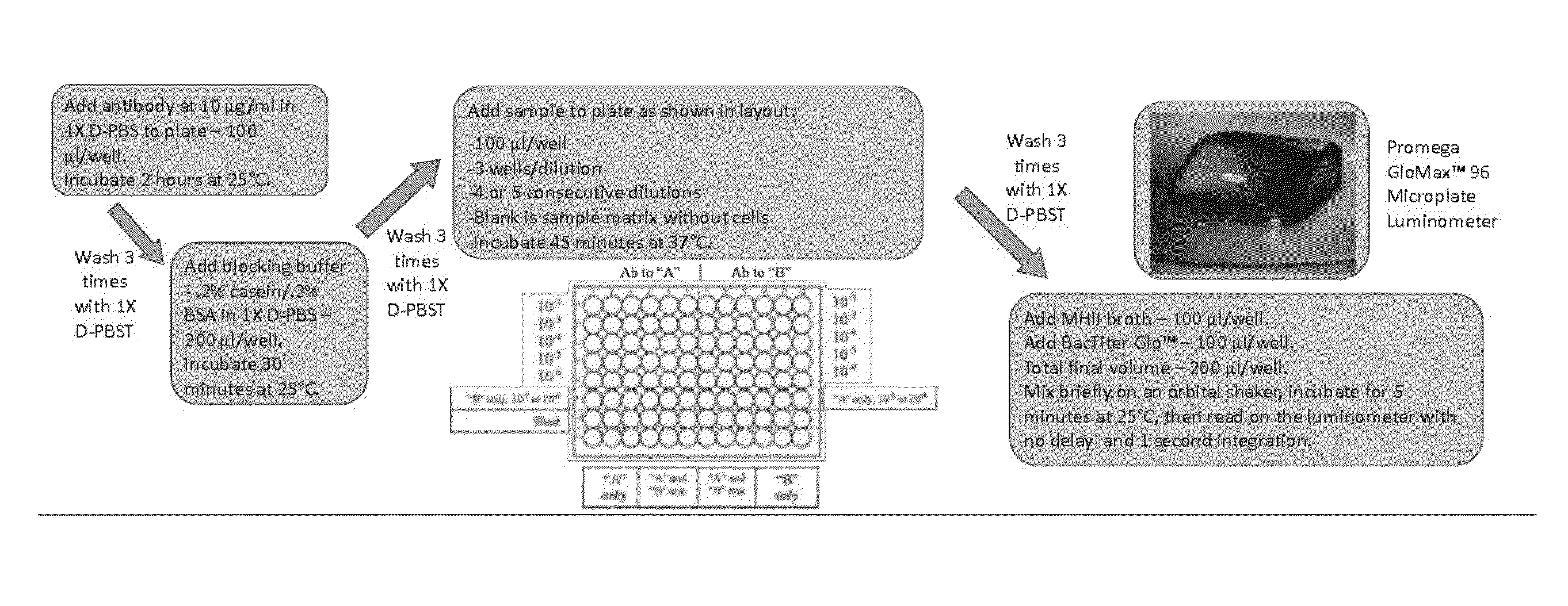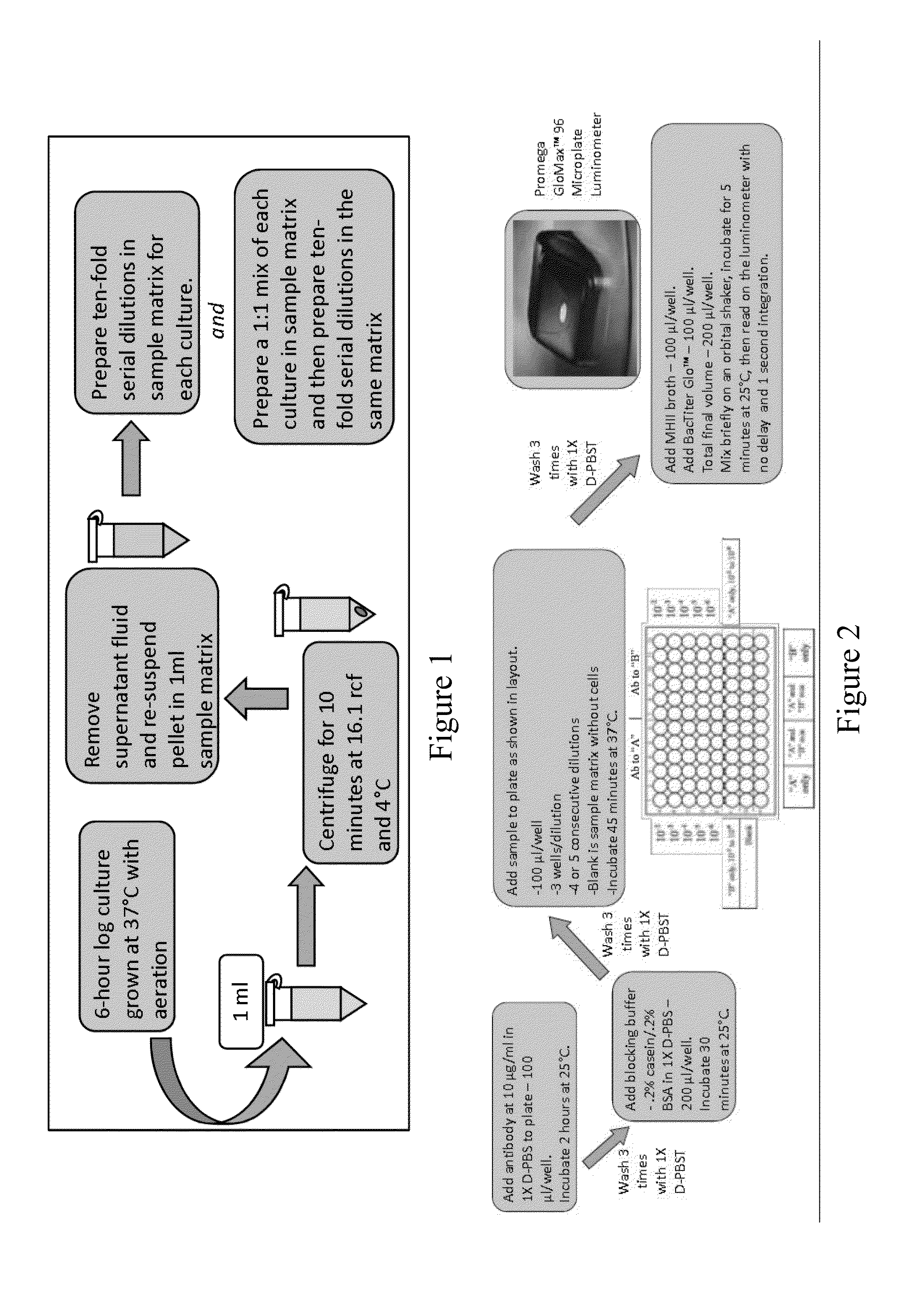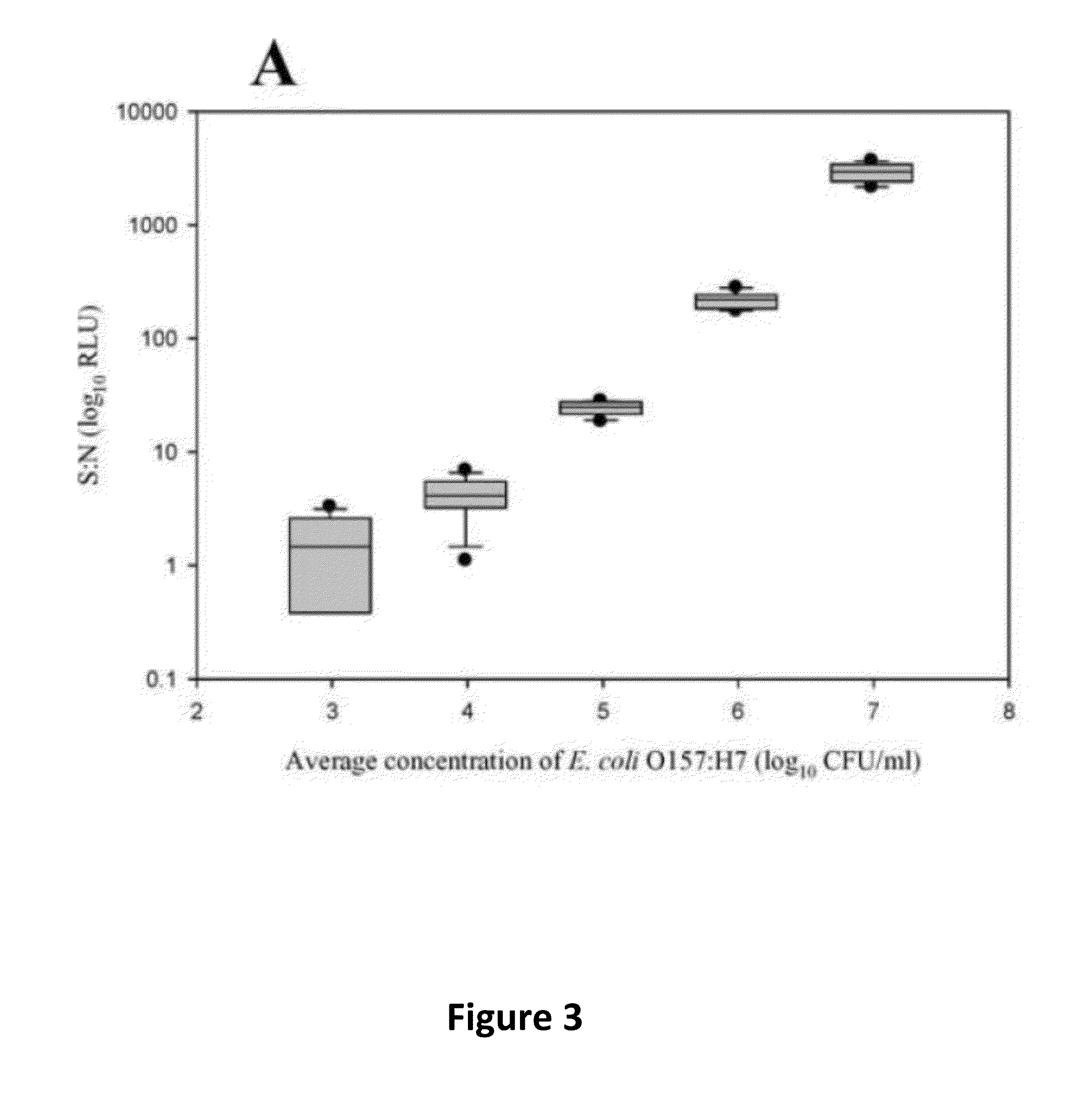Detection plate for ATP-bioluminescence immunoassay and method of manufacturing
a technology of immunoassay and detection plate, which is applied in the field of detection plate for atp-bioluminescence immunoassay and method of manufacturing, can solve the problems of affecting the efficiency of capture and achieve the effect of wide application and weak matrix
- Summary
- Abstract
- Description
- Claims
- Application Information
AI Technical Summary
Benefits of technology
Problems solved by technology
Method used
Image
Examples
examples
[0033]The following materials and methods where used for Examples I-III:
[0034]ATP-BLIA Antibodies: Lyophilized, affinity-purified, goat polyclonal antibody to E. coli O157:H7 Kirkegaard and Perry Laboratories, Inc., Gaithersburg, Md.) and affinity-purified, rabbit polyclonal antibody to Salmonella group antigen in PBS (AbD Serotec, Serotec, Inc., Raleigh, N.C.) were used as capture antibodies in the ATP-BLIA.
[0035]ELISA Antibodies: Lyophilized, affinity-purified, goat polyclonal antibody to E. coli O157:H7 conjugated to horseradish peroxidase (Kirkegaard and Perry Laboratories, Inc.) and affinity-purified, rabbit polyclonal antibody to Salmonella group antigen conjugated to horseradish peroxidase in PBS (AbD Serotec) were used as detection antibodies in ELISA. The lyophilized E. coli antibodies were rehydrated by addition of a 50% glycerol solution.
[0036]Bacterial strains and culture conditions (FIG. 1): Capture antibodies were evaluated by ELISA employing the bacteria listed in Tab...
example i
Sample Analysis
[0047]Apple juice, milk, and ground beef were analyzed for the presence of viable organisms prior to inoculation. The apple juice and milk were free of contaminants. Analysis of the ground beef by the most probable-number (MPN) technique for total coliforms resulted in an average of 9.2 MPN / g. Additional analyses with CHROMagar O157 and API 20E tests strips revealed that the beef did not contain E. coli O157:H7 or Salmonella.
example ii
ELISA
[0048]The sensitivity and specificity of the Salmonella and E. coli antibodies were evaluated by ELISA. Positive detection (S:N≧2.0) of Salmonella Choleraesuis, one Salmonella Enteritidis, and six Salmonella Typhimurium strains occurred at 105 CFU / ml. There was also detection of four Salmonella Typhimurium strains at 106 CFU / ml; two strains of Salmonella Enteritidis at 106 CFU / ml and five strains at 107 CFU / ml; and Salmonella Hadar, Salmonella Kentucky, and two Salmonella Newport strains at 108 CFU / ml. Positive detection of all E. coli O157:H7 strains occurred at 105 CFU / ml. Both antibodies were nonreactive to the other organisms evaluated at all concentrations. Detection of the target strains was not affected by the presence of non-target cells.
PUM
| Property | Measurement | Unit |
|---|---|---|
| volume | aaaaa | aaaaa |
| volume | aaaaa | aaaaa |
| total volume | aaaaa | aaaaa |
Abstract
Description
Claims
Application Information
 Login to View More
Login to View More - R&D
- Intellectual Property
- Life Sciences
- Materials
- Tech Scout
- Unparalleled Data Quality
- Higher Quality Content
- 60% Fewer Hallucinations
Browse by: Latest US Patents, China's latest patents, Technical Efficacy Thesaurus, Application Domain, Technology Topic, Popular Technical Reports.
© 2025 PatSnap. All rights reserved.Legal|Privacy policy|Modern Slavery Act Transparency Statement|Sitemap|About US| Contact US: help@patsnap.com



